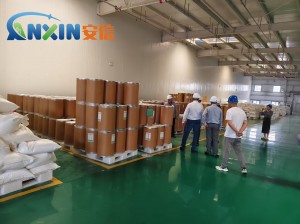Hydroxypropyl methylcellulose (HPMC) is a nonionic cellulose ether derived from chemically modified natural cellulose. Due to its excellent physical and chemical stability, non-toxicity, and wide range of functional properties, it is widely used in food processing. As a food additive, food-grade HPMC plays an important role in stabilization, thickening, emulsification, and moisturizing. Its safety has been rigorously verified by internationally recognized organizations.
1. Safety Analysis of Food-Grade HPMC
1.1. Raw Material Source and Chemical Properties
HPMC is produced from natural plant cellulose (such as cotton or wood pulp) through methylation and hydroxypropylation reactions. This process does not introduce toxic byproducts. The final product is a white or off-white powder that is tasteless, odorless, insoluble in oils and fats, and exhibits excellent biological inertness. Its molecular structure is stable and does not react adversely with other food ingredients.
1.2. Toxicology and Physiological Metabolism
Numerous toxicological studies have demonstrated that HPMC is not degraded by enzymes in the body and is virtually unabsorbed. Instead, it is excreted unchanged, posing no accumulation or metabolic burden to the human body. According to the assessment of the Joint FAO/WHO Expert Committee on Food Additives (JECFA), HPMC is listed as a safe substance with an “Acceptable Daily Intake (ADI) not specified,” indicating that its toxicological risk is extremely low.
1.3. International Standard Certification
Food-grade HPMC has been approved for use in food by multiple agencies, including the US FDA, the EU EFSA, and the Chinese National Standard (GB 29949-2013). Its E number, E464, is commonly used in capsule wall materials, food coatings, and beverage thickeners. HPMC that meets these standards is subject to strict limits on purity, residual solvents, and heavy metal content, ensuring safe and reliable use.
1.4. Allergenicity and Compatibility
Because HPMC is derived from natural plants and contains no protein, it is unlikely to trigger common allergic reactions. Its mild chemical properties ensure good compatibility with sugars, fats, proteins, and acids and alkalis in food, without causing adverse reactions or affecting flavor.
2. Functional Analysis of Food-Grade HPMC
2.1. Thickening and Stabilizing Properties
HPMC forms a transparent solution in water and exhibits excellent rheological properties, effectively increasing system viscosity and preventing stratification or precipitation. When added to fruit juice drinks, sauces, dairy products, and other products, it stabilizes suspended particles and enhances a smoother mouthfeel.
2.2. Moisturizing and Anti-Aging Properties
HPMC has excellent water-retention capacity, maintaining moisture in baked goods and delaying starch retrogradation, thereby extending shelf life. For example, its use in bread and pastries can significantly improve texture and create a softer texture.
2.3. Film-Forming and Coating Properties
Food-grade HPMC forms a dense, transparent, odorless film and is commonly used in coatings for candies, nuts, health supplements, and tablets, providing moisture-proofing, anti-sticking, and oxidation-retarding properties. Its thermogelling properties also make it suitable for thermal film-forming processes, enhancing the structural stability of food coatings.
2.4. Emulsification and Suspension
HPMC physically stabilizes water-oil systems, preventing oil separation by increasing interfacial viscosity. It is widely used in plant-based beverages, protein drinks, and low-fat foods to improve the stability of emulsions.
2.5. Thermogelling
HPMC solutions can form reversible gels when heated and regain fluidity upon cooling. This unique property holds great promise for applications in quick-frozen foods, jellies, and meat products, maintaining structural integrity during heating.
Food-grade HPMC is a green additive that combines safety and versatility. Its non-toxic, non-allergenic, and non-absorbable properties ensure food safety. Its multiple functions, including thickening, moisturizing, film-forming, emulsifying, and thermogelling, make it a vital component of the modern food industry. With the development of plant-based and health-conscious foods, the application of HPMC will continue to expand, making it an indispensable functional material in future food formulations.
Post time: Oct-23-2025

